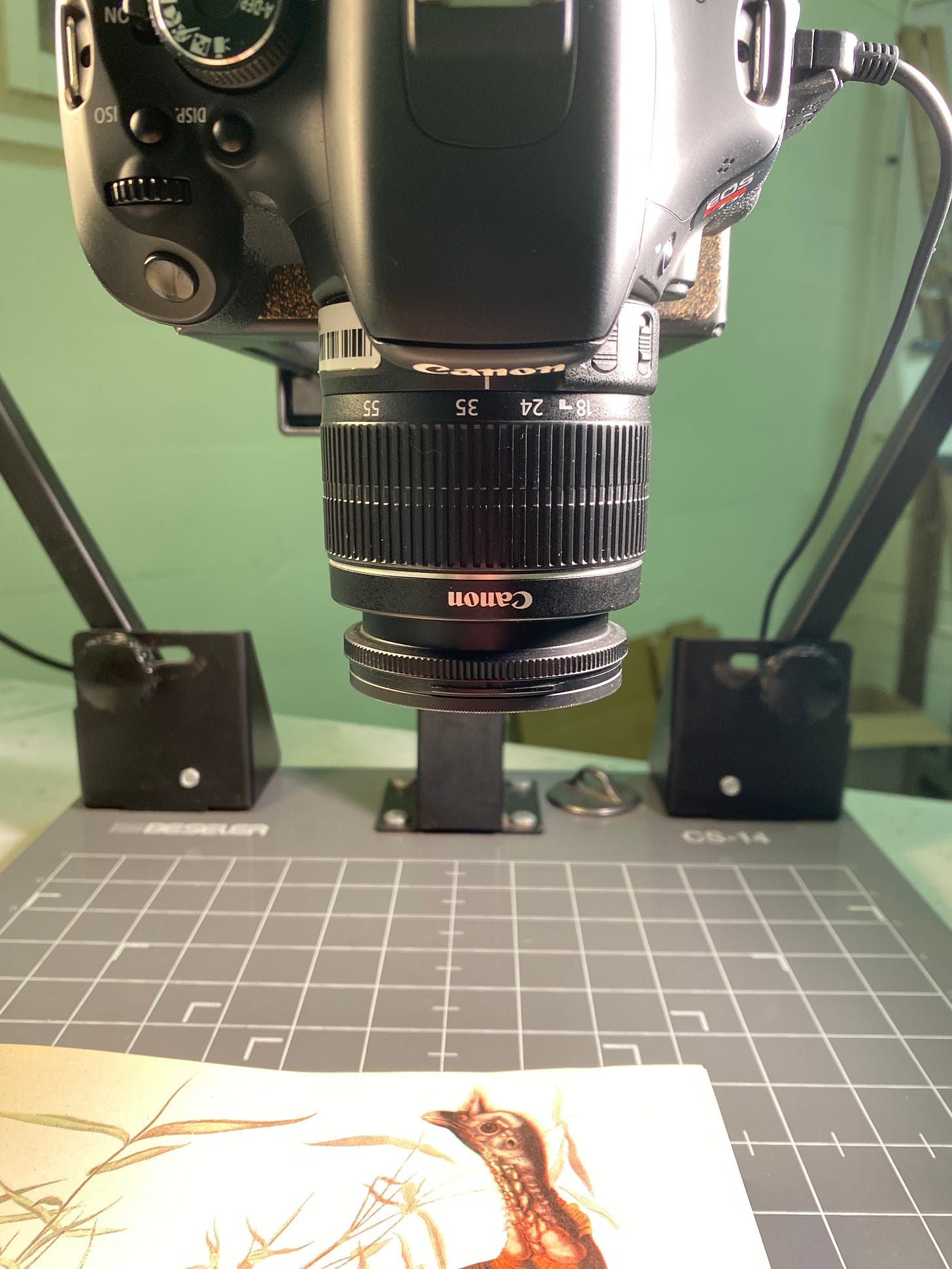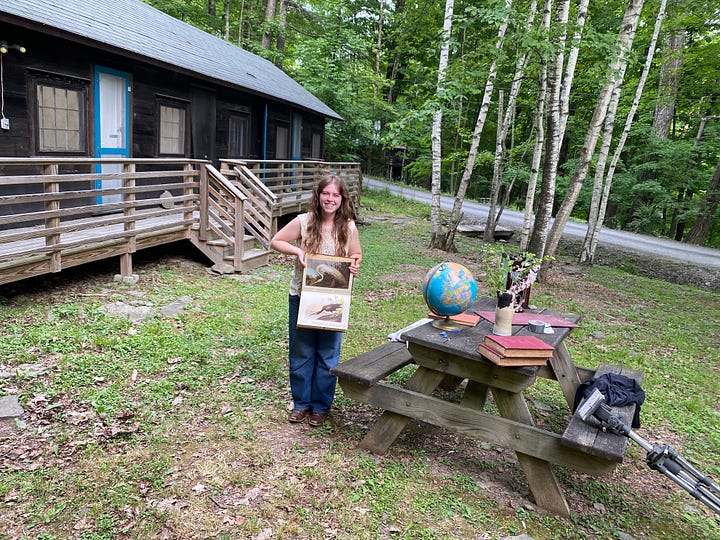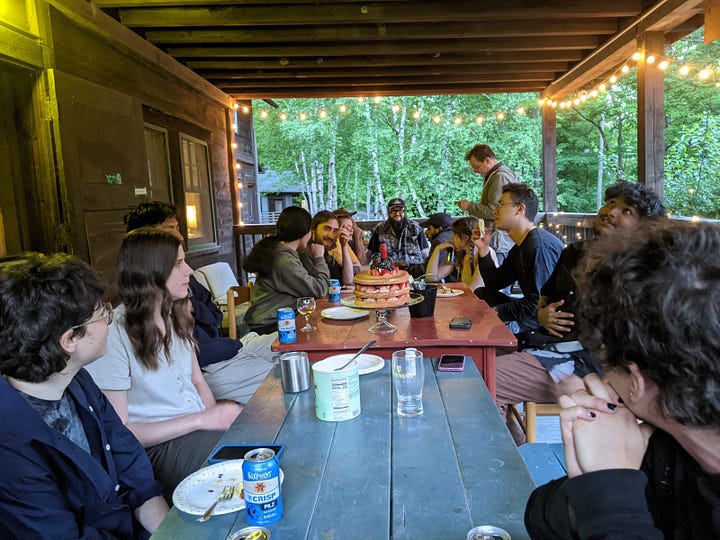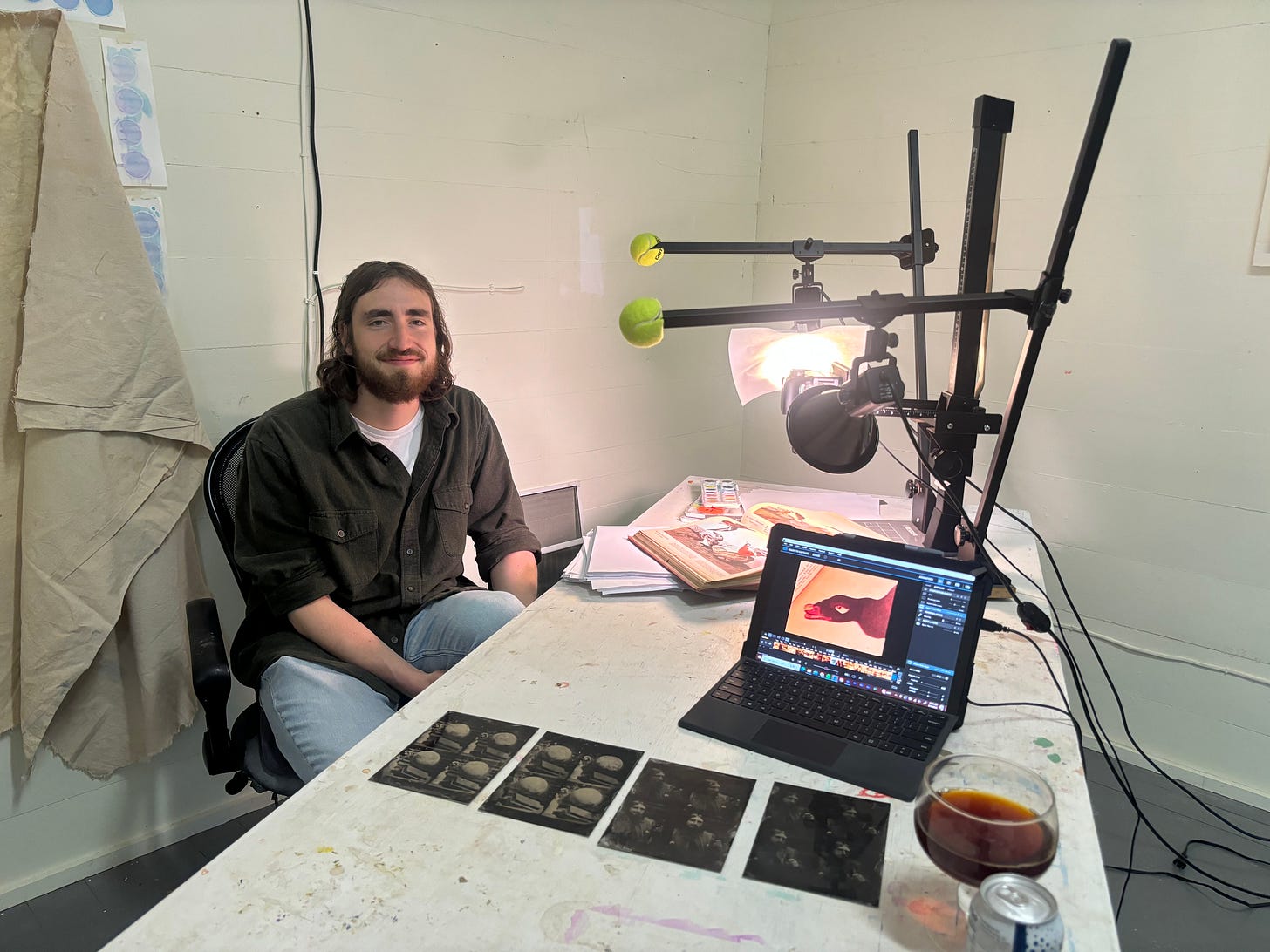"The Birds of America", an Audubon-inspired stop-motion animation piece by John Quinn
A piece made up of 1,000 photographs of Audubon's birds, inspired by the artist's time at the Woodstock Byrdcliffe Guild, where he learned about the complicated past of James Audubon.
Sometimes art happens like a flower that you didn’t plant yet blossoming in your garden, and I always enjoy hearing how birds fly unexpectedly into people’s lives and inspire them. John Quinn’s animation piece, The Birds of America, emerged organically during his time as an artist-in-residence at the Woodstock Byrdcliffe Guild in the Hudson Valley, contrary to his initial plans. I asked John to share the story behind it.
John Quinn is a Hudson Valley-based artist who primarily works with stop-motion and 2D animation. His experimental, analog work, which combines stop motion with various media on paper, was presented at the Woodstock Film Festival. During his residency in Woodstock, he encouraged the local community to embrace their creativity by leading a hands-on animation workshop, aiming to make animation more accessible to everyone. John says: “even though [animation] is kind of magic, anybody can do it – even people that can’t draw”.
John Quinn website: www.johnquinnanimates.com
Instagram: @ john_quinns_username
Woodstock Byrdcliffe Guild: www.woodstockguild.org
Mayuko Fujino: During your artist in residence at the Woodstock Byrdcliffe Guild, you created an animation called “The Birds of America” using bird illustrations by James Audubon. You described it as coming out of organizing bird photos and conversations about birds you had with people at the residency. Could you share with us the most memorable conversations that were the inspiration for the development of this piece?
John Quinn: The work really started off as surface level as you can get - I found a neat book of bird lithographs and thought wouldn’t it be interesting to line them all up by the eye. I was burnt out from a previous project and thought this would be a simple way to shake off the dust.
I think the legacy of Audubon was first brought to my attention by a sculptor and papermaker, also in residence at the time, Mia Brown-Sequin (not bird related but makes really great work). I can’t remember if she directly told me about Audubon’s other work “The Runaway” or I found it on my own after this conversation. It’s this piece he wrote during his time in the Americas which reinforces white supremacy - which for me really blew the barn doors wide open in regards to who [Audubon] I thought was just a one-dimensional figure that painted birds. From there I began initiating conversations about him with other residents and learning more, such as the movement to drop his name from the Audubon Society.

MF: How many birds are in this piece?
JQ: The official species count is 489 according to the book, however some illustrations had anywhere from one to ten or so birds in an illustration - I think all in all I took just shy of 1,000 photographs.
MF: What were your days like during the residency? Did you go in with a specific project that you wanted to complete, or did you want to be inspired by the environment and let ideas come to you organically?
JQ: I went in thinking I’d start another film, but slowly learned I was burnt out from my last short film FREE SNAKES (which is available on YouTube and not bird related). A lot of my days were spent experimenting with mediums and slowly accepting that I was in fact burnt out as much as I didn’t want to admit it. Once I had, The Birds of America project started.


MF: Is there a nature spot in Woodstock / Hudson Valley that you visited during the residency that stands out in your mind?
JQ: Onteora really stood out to me - one for how beautiful it is and also how much fun I had swimming there, but also from the shock of just how many visible snakes there are there? Not sure if that was just my experience but that lake seems extremely snake infested and I can’t forget that.
Highly recommend it regardless.





